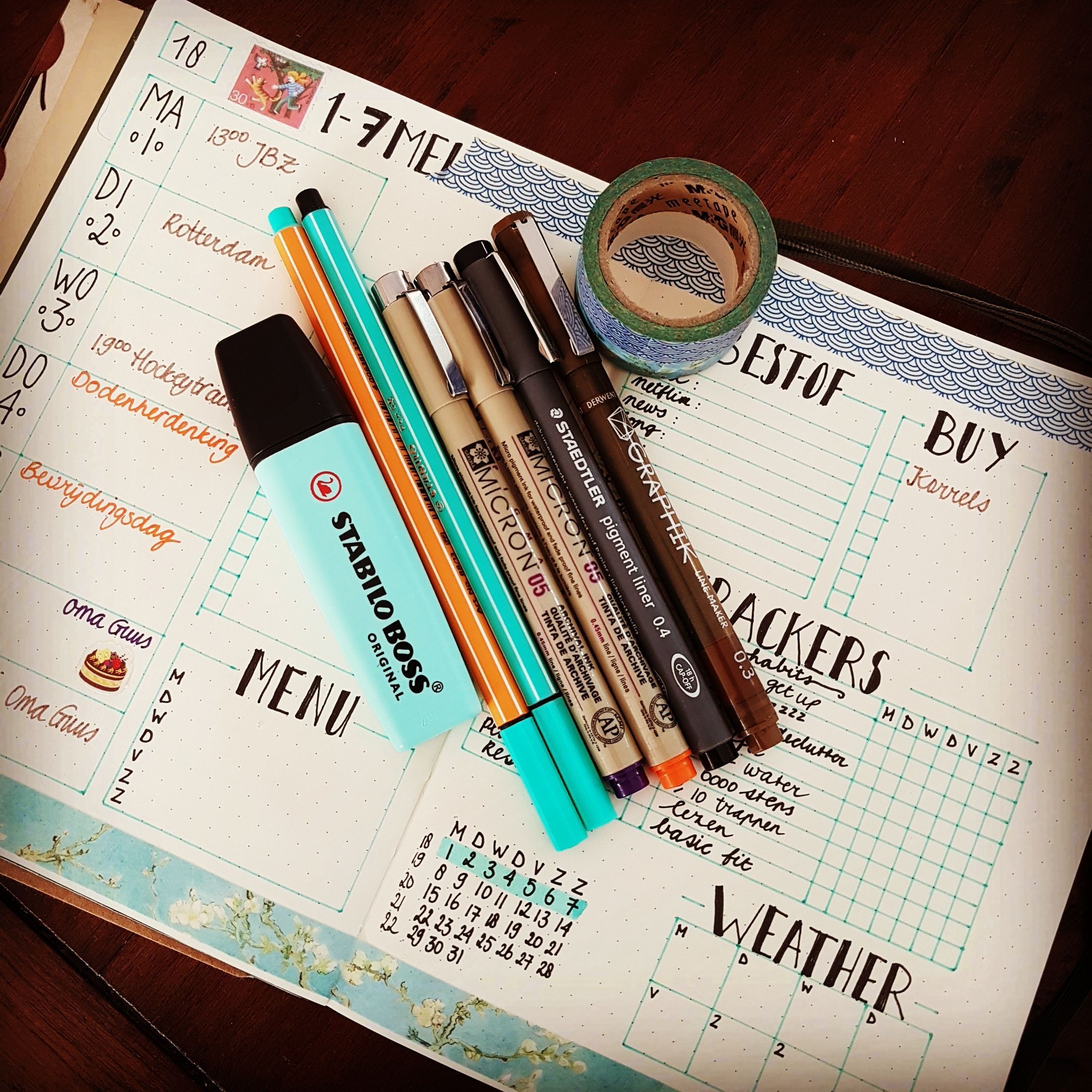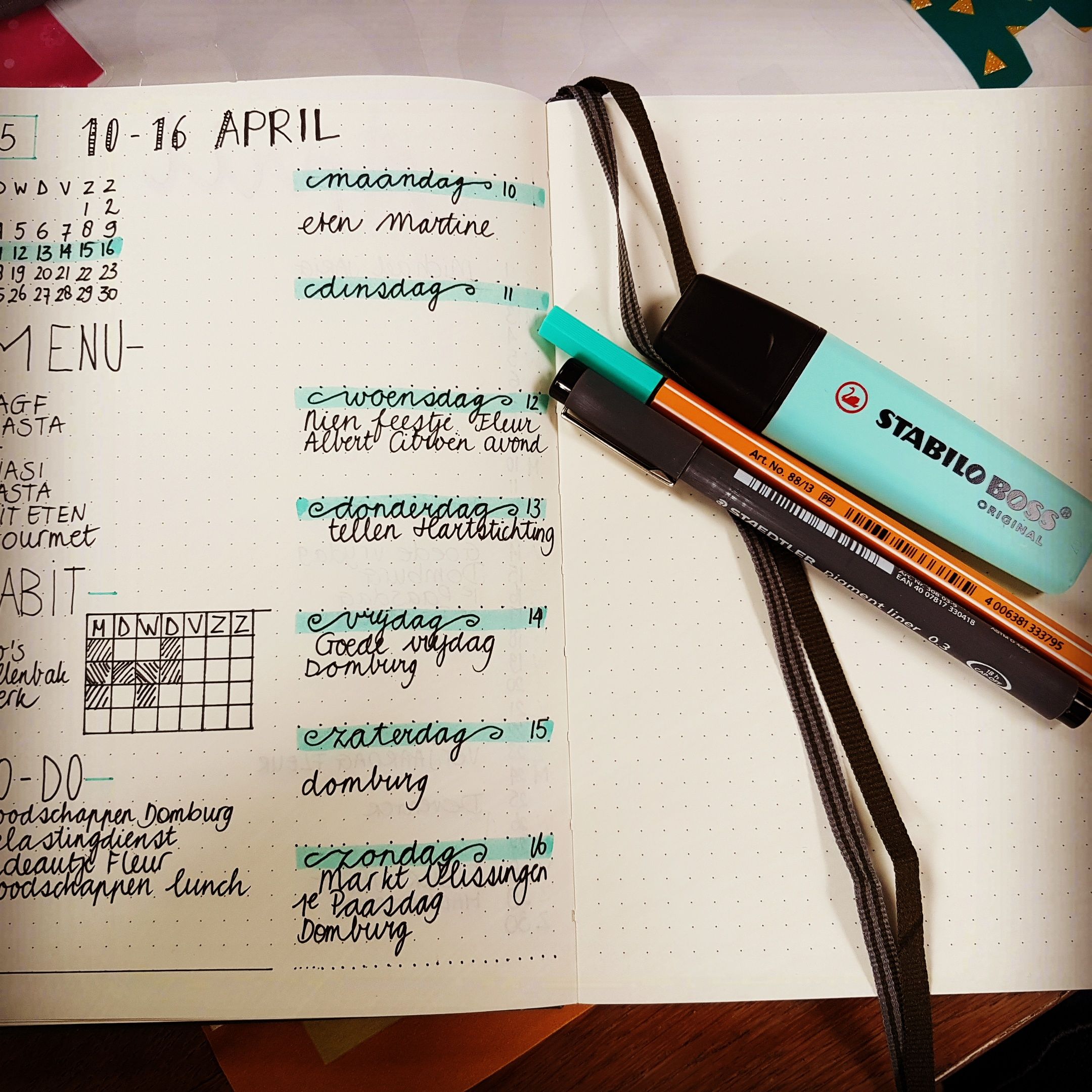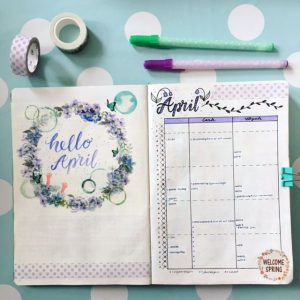Bullet Journaling
by Ester Delissen
Suddenly, everybody seems to be into bullet journaling. On Instagram, on Facebook, on Pinterest; wherever you look, you’ll find pictures of bullet journals.
What is bullet journaling and how do you use a bullet journal (or: bujo)? We hope to give you an answer to that question in this blog.
The actual concept of bullet journaling was created by a young New York designer called Ryder Carroll. He was looking for an easy way to plan his appointments, deadlines and to do’s in a simple paper notebook. He started working with ‘bullets’; various markings (dash, dot, arrow) which all have their own meaning (like tasks, notes, events).
The type of bullet journaling that we want to talk about here, is a slightly adjusted version of Ryder Carroll’s rather pragmatic way. You could say it has gotten a fine female touch. The starting point remains the same however: planning your time in a notebook. Drawings, paintings, art journaling and collages are not something you would really find in a bullet journal, apart from a little decoration; it’s above all a place where you can keep your lists.
Bujo Ryder Carroll
How do you use a bullet journal? It’s pretty simple: buy yourself a notebook (or take one from your stash, because us stationery lovers have far more than just one notebook, right ;-)?).
Any notebook will do, but you see most people working with a ‘dot grid’ notebook. It almost looks like a blank page, but you can still use the dots to draw straight lines and create ‘checkboxes’.
The Leuchtturm1917 dot grid A5 notebooks are very popular among bullet journalers. Leuchtturm1917 even has actual bullet journal notebooks, also with a dot grid.
But like we said: any notebook will do, as long as it’s a pretty one.
If it’s pretty, you’ll want to use it often.
Bujo by @bujo.sacha / Sacha van der Voorn
Open your new bullet journal, enjoy the pristine empty pages for a while, then reserve the first few pages for an index and number your pages (if that hasn’t already been done for you).
Then you can start making spreads. The most common spreads are weekly overviews, monthly overviews, annual overviews and habit trackers, but everything is possible in your own bullet journal.
You can make a list on virtually anything. Think about making a list on the books you’ve read or would like to read, your workout schedule, your weight loss journey, the series you’re watching or would like watch, a sleep tracker, a holiday checklist, ideas for presents, restaurants you would like to try, a cleaning schedule and so on.
This is also the reason you would want an index and numbered pages.
Let’s go back to the most common spreads: a weekly overview and a monthly overview.
Create as much space as you think you might need to record your days. If there’s any space left, you could plan your meals for the week or create a to do-list.
The monthly overview contains all your future activities, which do not yet fit in your weekly overview, because they’re further ahead.
Bujo Boho-Berry
The nice thing about a bullet journal is, is that you create it all by yourself. You make your spreads in a way that works best for you.
Your layout can look differently every week and you will add lists as you go. The best part about this calendar-in-the-making is that you can also decorate your spreads the way you like: with drawings, washi tape, stickers, etc.
You can add colour with markers or pencils or just leave it monochrome; journals which are written with just a black pen are just as beautiful!
Bujo by @bujo.sacha
Another popular list in a bullet journal is a habit tracker. You can do this per month, but you can also integrate one in your weekly overview. With a habit tracker, you can keep up with an endless amount of habits. We’re listing a few here, but let your fantasy run free:
HABITS
- reading
- bedtime
- no spend (how long will your no spend streak last?!)
- workout
- water intake
- (time for) hobbies
- making the bed
- working in your bujo
The intention is that you keep a log of your daily habits or of things you would want to become a habit. With a tracker, you will get insight in the habits that might need some extra attention next week, or next month.
Luckily, there’s really no right or wrong when it comes to bullet journaling. Get inspired on Pinterest or Instagram by using the hashtags #bulletjournal #bujo #bulletjournaling or #bulletjournallove!
INSPIRATION
Bujo by @kikkiknetter
Some of our favorite Bujo Instagram accounts:
* PS: Don’t forget couponcode cafeanalog if you order at Appelboom for 10% off !





